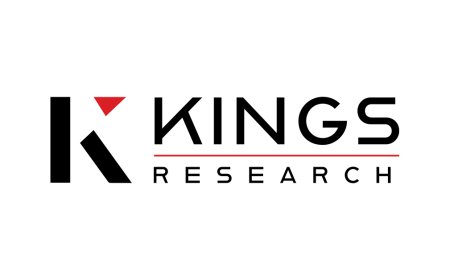Exploring the Benefits and Challenges of Integrated Medical Transport
Integrated Medical Transport (IMT) refers to the seamless coordination and provision of medical transport services to ensure timely and efficient patient care.

Introduction
Integrated Medical Transport (IMT) refers to the seamless coordination and provision of medical transport services to ensure timely and efficient patient care. IMT encompasses various modes of transportation, including ground, air, and water ambulances, as well as non-emergency medical transport. These services are critical in providing immediate medical attention, especially in emergencies, and ensuring continuous care during patient transfers between healthcare facilities. This article delves into the different aspects of Integrated Medical Transport, highlighting its importance, benefits, challenges, technological advancements, and future prospects.
Types of Integrated Medical Transport
Ground Ambulance Services
Ground ambulance services are the most common form of medical transport, providing crucial services in both urban and rural settings. These ambulances are equipped with basic to advanced life support equipment and staffed by trained medical personnel.
Air Ambulance Services
Air ambulances, including helicopters and fixed-wing aircraft, offer rapid transport for critical patients over long distances or in areas difficult to access by road. They are essential in emergencies where every second counts.
Water Ambulance Services
Water ambulances serve coastal and island communities, providing critical care and transport over water. These vessels are equipped similarly to land ambulances but are adapted to operate in marine environments.
Non-Emergency Medical Transport (NEMT)
NEMT services cater to patients who require transportation to medical appointments but do not need immediate medical attention. This includes transportation for routine check-ups, dialysis, physical therapy, and more.
Specialty Care Transport (SCT)
Specialty Care Transport involves transferring patients who need specialized medical care that standard ambulances cannot provide. This includes neonatal intensive care units (NICUs) on wheels and other specialized transport services.
Benefits of Integrated Medical Transport
Improved Patient Outcomes
IMT ensures timely medical interventions, reducing the risk of complications and improving patient outcomes. Rapid transport to appropriate medical facilities can be life-saving in critical situations.
Accessibility for Rural Areas
Integrated Medical Transport enhances healthcare accessibility in remote and rural areas, where healthcare facilities may be sparse. It bridges the gap by providing transport to specialized medical centers.
Rapid Response Times
The integration of various transport modes and the use of advanced tracking technologies ensure rapid response times, which are crucial in emergencies. This coordination can significantly impact survival rates and recovery times.
Coordination with Healthcare Providers
IMT involves close coordination with healthcare providers, ensuring that the patient's medical history and current condition are communicated effectively during transport. This seamless communication is vital for continuous and comprehensive care.
Challenges in Integrated Medical Transport
High Operational Costs
Operating integrated medical transport services involves significant costs, including maintaining vehicles, equipment, and trained personnel. These costs can be a barrier to the widespread availability of services.
Regulatory and Compliance Issues
Medical transport services must comply with stringent regulations and standards, which can vary by region. Ensuring compliance while maintaining high-quality care is a complex challenge.
Technological Barriers
While technology enhances IMT, it also presents barriers, such as the need for continuous updates and maintenance of advanced equipment. Integration of new technologies requires significant investment and training.
Workforce Shortages
The demand for qualified medical transport personnel often exceeds supply. Training and retaining skilled professionals is a persistent challenge in the industry.
Technological Innovations in Medical Transport
Telemedicine Integration
Telemedicine allows for remote medical consultations during transport, enabling real-time medical decisions and interventions. This integration enhances the level of care provided during transit.
GPS and Tracking Systems
Advanced GPS and tracking systems improve route efficiency and response times, ensuring that medical transport services reach patients as quickly as possible.
Advanced Life Support Equipment
Modern ambulances are equipped with state-of-the-art life support equipment, including defibrillators, ventilators, and monitoring systems, providing critical care en route to medical facilities.
Drones and Unmanned Vehicles
Innovations like drones and unmanned vehicles are being explored for delivering medical supplies and equipment in hard-to-reach areas, potentially transforming emergency medical response.
Patient Safety and Quality Assurance
Standards and Protocols
IMT services adhere to strict standards and protocols to ensure patient safety. These guidelines cover everything from equipment maintenance to patient handling procedures.
Training and Certification of Personnel
Continuous training and certification of medical transport personnel are crucial to maintaining high standards of care. This includes regular drills, updated courses, and adherence to best practices.
Infection Control Measures
Infection control is a top priority in medical transport, with rigorous protocols in place to prevent the spread of infections during transport. This includes the use of personal protective equipment (PPE) and sanitization procedures.
Patient Feedback and Continuous Improvement
Collecting and analyzing patient feedback helps in identifying areas for improvement. Continuous improvement programs ensure that IMT services evolve to meet patient needs effectively.
Case Studies and Success Stories
Rural Area Medical Response Improvement
In many rural areas, integrated medical transport has significantly improved response times and access to emergency care. For example, the introduction of air ambulance services in remote regions has saved countless lives by providing rapid access to advanced medical facilities.
Successful Air Ambulance Missions
Numerous successful air ambulance missions demonstrate the critical role these services play in emergency medical care. These missions often involve transporting patients from accident sites or remote areas to specialized hospitals quickly and efficiently.
Innovations in Urban Medical Transport
Urban areas have seen innovations such as bicycle ambulances for congested areas and the use of advanced communication systems to coordinate multiple transport modes, improving overall efficiency.
Patient Testimonials
Patients who have benefited from integrated medical transport services often share their stories, highlighting the importance of these services in saving lives and improving health outcomes. These testimonials provide valuable insights into the real-world impact of IMT.
Future Prospects of Integrated Medical Transport
Emerging Technologies
The future of IMT looks promising with the advent of emerging technologies such as AI, IoT, and blockchain, which can enhance coordination, data management, and overall service efficiency.
Policy Changes and Government Initiatives
Government initiatives and policy changes can significantly influence the development and expansion of IMT services. Supportive policies can facilitate funding, research, and infrastructure development.
Expanding Global Reach
As healthcare becomes increasingly globalized, expanding the reach of IMT services to underserved regions worldwide is a critical goal. International collaborations and aid programs can support this expansion.
Sustainability and Green Transport
The focus on sustainability is leading to the development of green transport solutions within IMT, including electric ambulances and eco-friendly operational practices, reducing the environmental impact of medical transport services.
Expert Insights
Interviews with Medical Transport Professionals
Medical transport professionals provide valuable insights into the daily challenges and innovations within the field. Their experiences highlight the importance of continuous improvement and adaptation in IMT services.
Analysis by Healthcare Experts
Healthcare experts analyze the trends and future directions of IMT, providing a broader perspective on how these services can evolve to meet changing healthcare needs.
Predictions for Future Trends
Experts predict that future trends in IMT will include increased automation, personalized care solutions, and further integration with broader healthcare systems, enhancing overall efficiency and patient outcomes.
Conclusion
In summary, Integrated Medical Transport is a vital component of the healthcare system, providing essential services that improve patient outcomes and accessibility. Despite challenges such as high operational costs and regulatory issues, technological innovations and continuous improvement efforts promise a bright future for IMT. Stakeholders, including healthcare providers, policymakers, and technology developers, must work together to ensure that IMT services continue to evolve and expand, ultimately enhancing healthcare accessibility and quality for all.
What's Your Reaction?

















